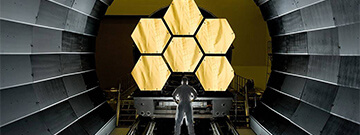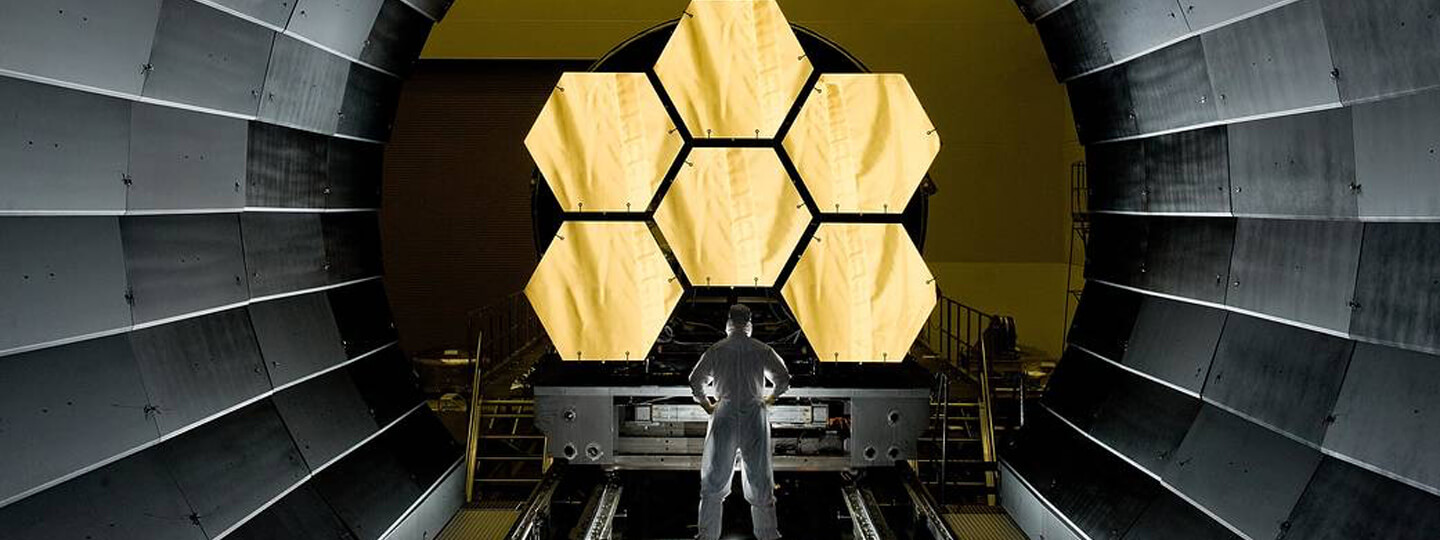
Image Credit: NASA/MSFC/David Higginbotham
The James Webb Telescope
On Dec. 25, 2021, the James Webb Telescope was launched into space. The James Webb Space Telescope is the biggest, most powerful telescope yet created in space. It will enable researchers to examine the condition of the cosmos 200 million years after the Big Bang – the event that led to the creation of the universe. Some of the very earliest galaxies to develop will be seen in photographs taken by the telescope. Additionally, it will be able to view objects in our solar system beyond Mars and see into dust clouds to determine where new planets and stars are developing. On July 12, 2022, the first highly anticipated images of outer space captured by the telescope were released by NASA. These images were the deepest infrared images of the universe that have ever been taken.
The telescope itself is very tall – about the size of a 3-story building! It works like any other telescope. Curved mirrors are used to collect light from the night sky. Light is focused by a telescope’s mirror or lens’ shape. When we gaze through a telescope, that focused light is what we see. The James Webb works in the same way, but it has 18 smaller mirrors that can unfold to create one huge mirror, and this enables it to capture even more details than ever before!
What excites scientists about the James Webb is that it can detect infrared light. Infrared light cannot be seen by the human eye, but it can be felt in the form of heat. When you touch a hot cup of coffee, you can feel the heat, and that heat is infrared light. While we cannot see infrared light, the James Webb Telescope can! The mirrors on the telescope are plated with a thin layer of gold, helping them reflect as much infrared light as possible to be detected. Being able to detect this light is important because we can then see through clouds of dust. Many planets and stars form inside these dust clouds, so scientists can determine where new space objects are forming.
There are already new discoveries being made only months after the release of images taken by the telescope. We can expect to see many more in the future! If you’re interested in the process of receiving mind-blowing pictures from the James Webb, check out NASA’s timeline ![]() ! You can click through the different stages and learn about all the technologies and systems that led to this remarkable feat.
! You can click through the different stages and learn about all the technologies and systems that led to this remarkable feat.
Source:
“Mission & Launch Quick Facts.” WebbTelescope.org
https://webbtelescope.org/quick-facts/mission-launch-quick-facts ![]() .
.
“Webb Space Telescope GSFC/NASA.” NASA, NASA
https://webb.nasa.gov/ ![]() .
.
“Where Is Webb? NASA/Webb.” NASA, NASA
https://jwst.nasa.gov/content/webbLaunch/whereIsWebb.html ![]() .
.
Scientific Peer Review by Alysia Mandato
Aneri Shethji:
Aneri Shethji is a 10th grader at North Allegheny Intermediate High School. She is very passionate about science and writing and enjoys getting involved with the community. In her free time, Aneri spends time with friends and family and loves getting outside. She can’t wait to learn more about all that science has to offer, and help others learn it too!

On April 8, 2024, we will witness a mesmerizing event. A total solar eclipse is upon us, and here at the Science Center, we can explore this celestial phenomenon in many ways.
But first, what is this event? A ...

Climate change is a big deal. We’ve all seen news stories about greenhouse gas emissions, rising temperatures, and the hole in our ozone layer. However, what tends to sometimes be overlooked is climate change’s ...

In the captivating world of health care, a fascinating transformation is taking place—a rise in Artificial Intelligence, or AI! Picture a world where smart machines team up with doctors to revolutionize medicine, making ...

Hydroponics, a contemporary farming method, redefines how we grow plants, offering a fresh approach to cultivating crops that differs from traditional soil-based farming. This innovative technique doesn’t rely on soil ...
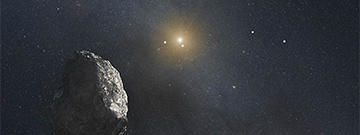
In our solar system, the eight planets—Mercury, Venus, Earth, Mars, Jupiter, Saturn, Uranus, and Neptune—are talked about more than anything. While the ...
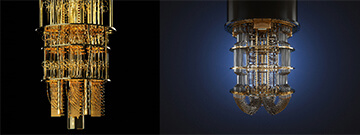
Quantum computers are on the forefront of technological advancement. These machines, unlike any traditional computers you’re familiar with, harness the ...

The Earth is a spectacle of constant movement. Periodically, it commands our attention with displays of power—earthquakes. These events are tied to the intricate movements of the Earth's tectonic plates. Tectonic ...

Have you ever wondered how investigators in crime shows manage to identify suspects with such accuracy? Dusting for fingerprints isn’t always feasible in many cases, so the true answer lies in a different type of ...

Writers: Evan Allen, Ricardo Aguilar, Jillian Pensenstadler, Amelia Foley, and Ian Lisien
Once a center of industrial prowess, Pittsburgh has undergone a remarkable transformation, ...

Have you ever questioned what happens to the food you consume? Prepare yourself for a thrilling voyage as we go through your digestive system! We'll look at ...

When someone falls on their arm, they immediately head to the hospital to see if it is hurt. X-rays are used by doctors to examine your bones more ...
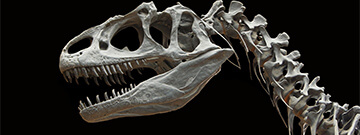
Even though dinosaurs became extinct about 65 million years ago, we know quite a bit about them, including what they ate, where they lived, and even what ...


